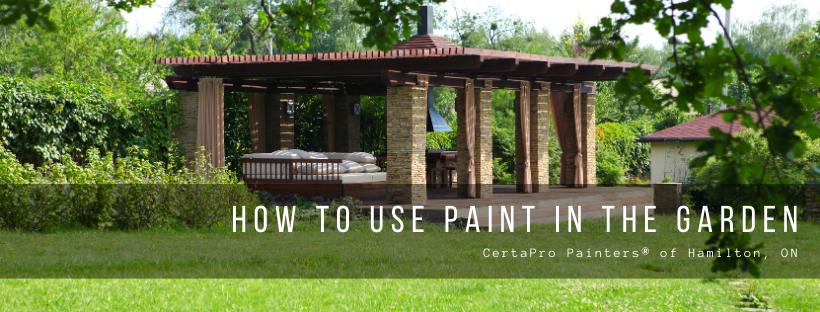
How to Use Paint in the Garden
Posted on May 26, 2020
If the warmer weather has you eager to get your fingers in the dirt, you’re not alone. Creating a garden that is visually appealing and equally fruitful is on many of our to-do lists this season. Take your garden up a notch in style by incorporating some new paint. Here’s how to use paint in the garden.
Make sure you choose the right paint for your project in the garden. Surfaces of different materials and finishes require specific paint. Some paints boast several uses, making them suitable for much of your project. Take stock in what you would like to add paint to. Is it wood, metal, brick, stucco or a combination of them? When you shop, make sure the paint you get works for the surfaces.
Where to start
Use garden surfaces as a place to add color to your display. Find a color theme that works for your exterior of your home, plants and general surroundings. Allow the plants to be the highlights and add contrast with your painting. Keep in mind that preparation is the key to a successful and lasting project. You should expect to spend ⅔ of your project time on cleaning and preparation. This includes any repairs that need to be done before you apply paint.
Products
Knowing your products can allow you to best utilize your work. Paints and varnishes will sit on top of surfaces and create a protective layer. Paints and varnishes are useful on nearly all surfaces since they sit on top. Oils and stains will penetrate into the surface of the material. This is specifically helpful when dealing with wood and other porous materials. It allows the layer to absorb into and protect the material below.
Bricks
Some gardeners use bricks to create borders and retaining walls on their garden projects. The bricks can add a natural element for climbing plants to adhere to. While they can look great for several seasons, the bricks will lose their color after exposure to the elements for several seasons.
Limewash
One way to finish external walls around your garden is with a process called limewashing. This is specifically successful on porous surfaces like brick, stone or lime plaster. It allows you to alter the shade of the surface slighting in many pastel shades. Typically this process needs to be repeated every five years or so.
Masonry Paint
While bricks are a beautiful way to create borders and walls around your garden, they can lose their luster after just a season or two. For graying bricks, use a masonry paint to add a bright or deep palette. If you are dealing with older bricks that are showing signs of cracking and chipping, use a textured option. It will disguise the problem areas with a new texture.
Remember when painting with masonry paint, it removes the porous breathability of the bricks. Limewash will retain this factor, but will not hide the challenges in the brick.
Woodwork
There are quite a few options available to update wood in your garden area. Most have the added benefit of protecting the wood structure as well as making it more beautiful. Be sure the wood stain or paint you choose is suitable for exterior work, meaning it can stand up to the elements. Wood requires proper preparation as well as priming. This allows it to absorb the stain or paint appropriately and ensures a great finish.
Metals
Metal has a very hard time standing up to rain and elements outside. If you are utilizing a trellis or other metal piece in your garden, it’s important to maintain it to avoid rusty run off into your garden. Luckily, updating these pieces is simple. Use a wire brush to clear away rust and get a metal paint to refinish it. Our gardeners have found that Rustoleum carries some great paints that will prime and paint in one step. It also has rust-inhibiting properties within the paint. ‘
Now that your garden is in order, your fence or patio might need some love. For these larger exterior jobs, our crew is here to help. Schedule a no-obligation estimate appointment today.





